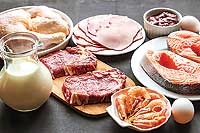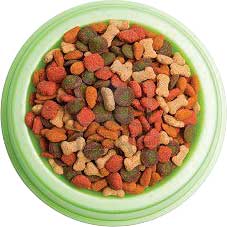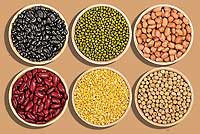There has been a lot of misinformation and hysteria recently in regard to grain-free diets for pets and has become oversimplified into grain free food is bad. The issue is really about quality of animal proteins vs plant based proteins in food and whether this is causing heart issues with dogs. Consumers want a quick and safe bet when selecting food for their beloved pets. It has become a standard to equate grain-free with quality and safety but in truth there is big profit to be made when it comes to your dog’s dinner, so cheating happens.

The reality is avoiding grains in pet food is only necessary when your pet is grain intolerant or allergic. There is much more analysis to consider when deciding if a pet food is quality or not. This all boils down to some grain free foods still being low quality, so knowing what you are reading when you look at the back of the bag will determine quality.
Why isn’t grain free automatically better? Labeling standards are the start. The Association of American Feed Control Officials (AAFCO) is a voluntary membership association of local, state and federal agencies charged by law to regulate the sale and distribution of animal feeds and animal drug remedies. They give standards by which all pet food manufacturers adhere to create a way to compare each food against each other. They regulate how you may word the food title, list the ingredients and ensure labels that don’t misguide the consumer with blatant lies. 
Even though these standards provide good means to compare foods, they do not provide the whole picture. Manufacturers have proprietary rights so giving exact measurements of each ingredient would infringe on their intellectual property. Therefore AFFCO can only suggest a guaranteed analysis on the back of the bag that shows protein, fat, moisture and fiber. Manufacturers also have to list the ingredients in the order of weight majorities. Sounds simple and a way to compare apples to apples, but there are tricks to fool you.
If a label has meat listed first in its whole form (raw meat is on average 70% water weight), and there are binders/grains listed second and third (raw grains/binders have 15-40% water weight), when the kibble is cooked down to 10% total moisture it’s now mostly binders or grains after losing all that water content from the meat. Since these labels don’t have to tell you how much of each ingredient is in the bag, you would have to add up all the meat items vs binders and compare where they are on the list to tell what is in the bag. If a label has 10 ingredients before getting to the supplements (they account for an average of 5%), you can assume that each item only has to be a max of 9.5%, if meat is the first 3 of these and fillers are the rest, the food contains up to 60% fillers. Short lists are better, especially when it come to the big ingredients.
 The other factor to consider, and it’s a big part of the recent news about grain-free foods, is that not all protein is alike. Many companies boost their protein % for the AAFCO guaranteed analysis by using fillers or binders that are naturally high in protein. Fillers that would help create a cereal (which is what kibble really is) that is high in protein would look like there is lots of meat when in fact there are mostly plant based ingredients. Since AAFCO doesn’t require a company to tell you what percentage of the protein comes from meat versus grains, fruits and vegetables, the company has to be willing to tell the consumer. The other factor to consider, and it’s a big part of the recent news about grain-free foods, is that not all protein is alike. Many companies boost their protein % for the AAFCO guaranteed analysis by using fillers or binders that are naturally high in protein. Fillers that would help create a cereal (which is what kibble really is) that is high in protein would look like there is lots of meat when in fact there are mostly plant based ingredients. Since AAFCO doesn’t require a company to tell you what percentage of the protein comes from meat versus grains, fruits and vegetables, the company has to be willing to tell the consumer.
Proteins that come from fruits, vegetables and grains also lack Taurine. Taurine is an amino acid that is widely distributed in animal tissues. Taurine is essential to dogs and cats (much more so for cats!) for heart, nervous system and retinal function. When a food has too much plant based protein content that lacks Taurine and the supplements they add do not provide enough over a lifetime or even a few years a dog or cat can develop serious deficiencies that could result in cardiomyopathy, eye issues or neurological problems. It’s not that all grain-free foods are bad, but the ones that are heavy in plant based proteins without enough supplementation could be a problem.
 Many pet food manufacturers see this as an opportunity for more transparency, so they are telling you in print what % of their proteins are coming from plants vs. animals. Any brand that is willing to do this is worth considering. It’s not the whole story about the food, but a much more complete picture of what’s in the bag. Many pet food manufacturers see this as an opportunity for more transparency, so they are telling you in print what % of their proteins are coming from plants vs. animals. Any brand that is willing to do this is worth considering. It’s not the whole story about the food, but a much more complete picture of what’s in the bag.
When providing nutritional recommendations for your dog, we suggest that you…
• Feed a variety of products, rotating both among and between several manufacturers of products, for nutritional balance over time, and to avoid problems caused by long-term exposure to any formulation problems or nutritional imbalances/excesses/inadequacies in your dog’s diet.
• Feed the best food you can afford and that your dog does well on. This doesn’t mean spend the most that’s possible; if your dog does great on mid-range foods, great! But super cheap food should be avoided. The difference in the ingredients of cheap foods versus mid-range foods is staggering.
• Feed grain-free foods only for good reason (dog intolerant of/allergic to multiple grains) not because you equate grain-free with high quality. There are many high quality grain-friendly foods available on the market and at the Moab Barkery.
• DO READ ingredient labels. You should recognize most of the foods in the food; if things are weird, and only sound sort of food-like, they are likely highly processed food fractions. You don’t want to see a lot of those. If the front of the label says the food is “chicken and rice,” you had better see chicken and rice high up on the ingredient label, not buried four ingredients back below chicken by-product meal, corn, wheat, beet pulp and pea protein.
• Incorporate raw and whole foods as part of your dog’s regular diet. There is already plenty of research about the drawbacks of feeding a highly processed, shelf stable diet as your dog’s only nutrition. Your dog’s diet should keep them healthy, not lead to further damage and disease.
|